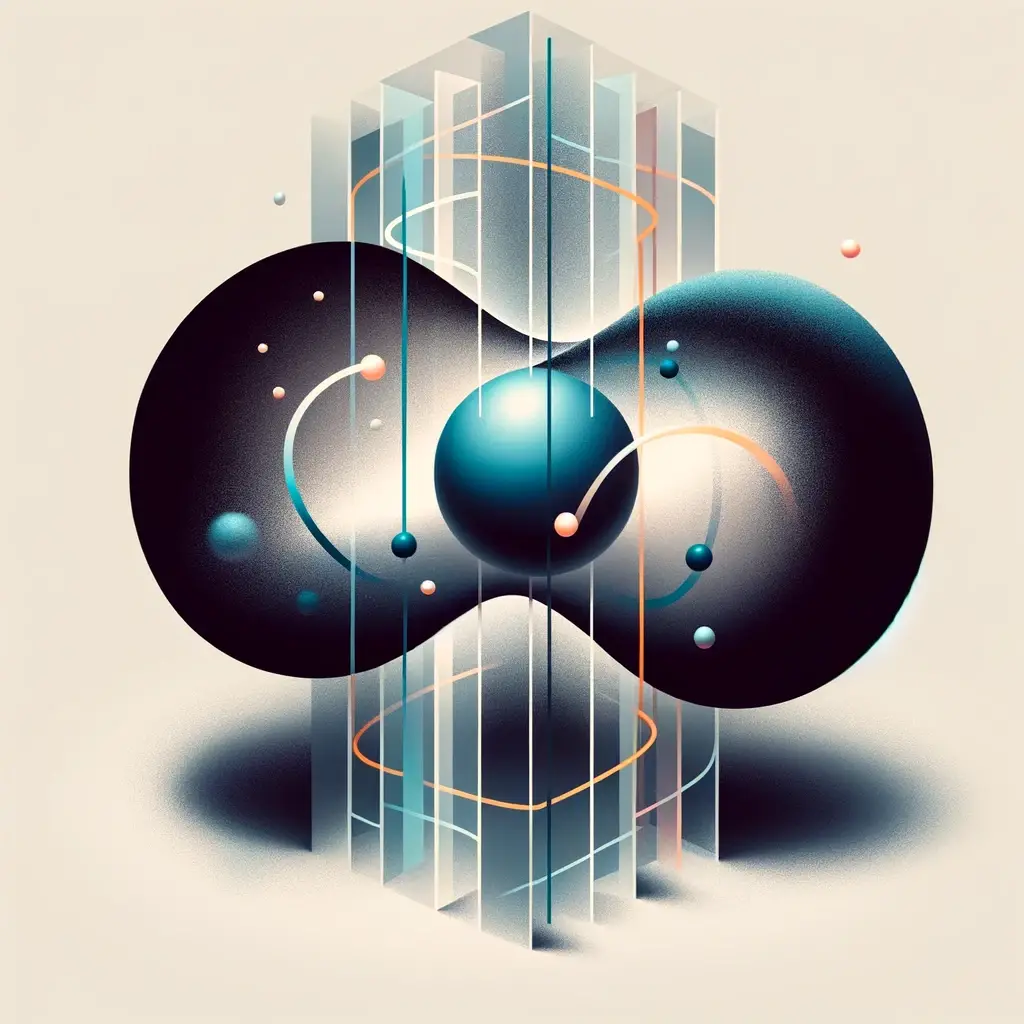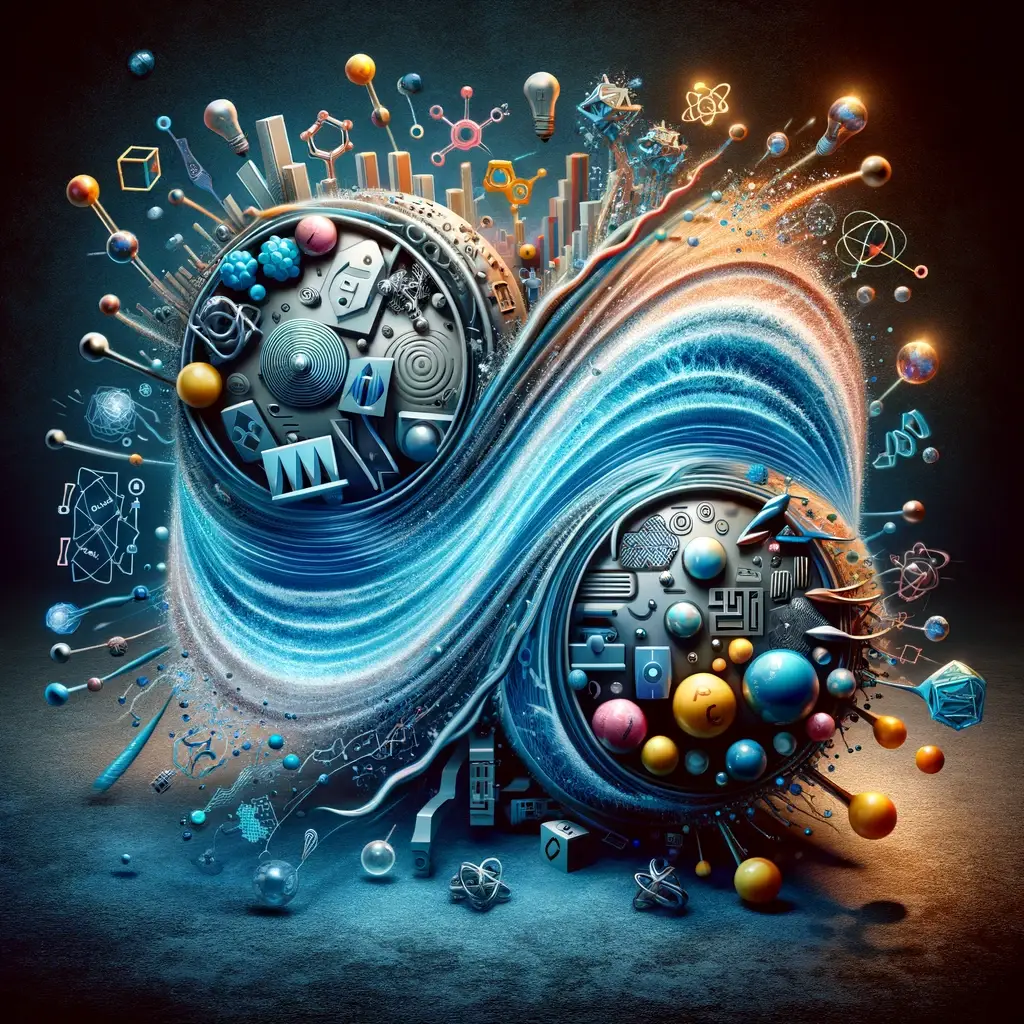Quantum technologies are poised to revolutionize the way we compute, communicate, and measure, promising advancements that were once the realm of science fiction. At the heart of these technologies lies quantum mechanics, a fundamental theory in physics that provides a description of the physical properties of nature at the scale of atoms and subatomic particles. This tutorial aims to demystify the principles of quantum mechanics, making them accessible to those curious about how quantum technologies work.
This comprehensive guide aims to bridge the gap between complex quantum theories and their tangible applications, addressing both the curiosity of engineers seeking practical solutions and the precision that quantum physicists advocate for. Our goal is to elucidate how these principles, once purely theoretical, are now fueling innovations across various industries, from computing to cryptography, and beyond.

1.1 Wave-Particle Duality and Engineering Materials
One of the most striking aspects of quantum mechanics is the wave-particle duality, which suggests that every particle or quantum entity can be described as both a particle and a wave. This duality is best illustrated by the Double-Slit Experiment, where light (or electrons) shows both wave-like interference and particle-like detection at a screen.
This principle is crucial in developing materials for electronics and photonics, impacting how we design sensors and processors that are at the heart of quantum computing.

1.2 Quantization: The Energy Step Ladder
Quantum mechanics introduces the concept that energy is quantized, meaning it comes in discrete amounts called quanta. This is evident in phenomena like the photoelectric effect, where light can eject electrons from a metal surface only if its frequency is above a certain threshold, regardless of the light’s intensity.
This concept is applied in quantum dot technology, used in displays for more vibrant screens and in solar panels for more efficient energy capture, showcasing the direct impact of quantum mechanics on renewable energy solutions.

1.3 Quantum Superposition: The Power Behind Quantum Computing
Superposition is the principle that a quantum system can exist in multiple states or configurations simultaneously until it is measured. For example, an electron in a quantum dot can be in a state where it is simultaneously “spin-up” and “spin-down” until its spin is measured.
Superposition allows quantum bits (qubits) to be in multiple states simultaneously, unlike classical bits that are either 0 or 1. This principle is the cornerstone of quantum computing, offering the potential to solve complex problems—from drug discovery to logistics—faster than traditional computers.
1.5 Heisenberg’s Uncertainty Principle: Precision in Measurement
This principle states that it is impossible to simultaneously know both the exact position and the exact velocity of a particle. The more precisely one property is measured, the less precisely the other can be controlled or determined. This inherent uncertainty is not due to experimental imperfections but is a fundamental property of quantum systems.
The Heisenberg Uncertainty Principle, highlighting the limitations in measuring certain properties of particles simultaneously, informs the development of quantum sensors. These devices achieve unprecedented precision in measurements, beneficial in navigation systems, geological exploration, and even medical diagnostics.

Bridging Theory and Application
While the intrinsic beauty of quantum mechanics lies in its mathematical formulation, its true marvel is observed in practical applications. Engineers and technologists are harnessing these principles to push the boundaries of what’s possible, turning theoretical knowledge into real-world innovations.
The Challenge of Realization
Despite the promising horizon, the path from theory to application is not without its hurdles. Quantum systems are notoriously delicate, requiring conditions like extreme cold to operate. Engineers are tasked with overcoming these challenges, making quantum technologies robust and scalable for commercial use.

2. Implications for Quantum Technologies
2.1 Quantum Computing
Quantum computing leverages superposition and entanglement to perform complex computations more efficiently than classical computers. Quantum bits or qubits can represent and process a large amount of information simultaneously, offering potential breakthroughs in fields like cryptography, materials science, and complex system simulation.
2.2 Quantum Cryptography
Quantum cryptography uses the principles of quantum mechanics to secure communication channels. The most well-known application, quantum key distribution (QKD), utilizes the uncertainty principle and entanglement to ensure that any attempt at eavesdropping can be detected.
2.3 Quantum Sensing and Metrology
Quantum sensors exploit quantum correlations and superposition to measure physical quantities (such as time, magnetic fields, and gravitational forces) with unprecedented precision. This has applications in navigation, mineral exploration, and fundamental physics research.
3. Conclusion: A Unified Vision for the Quantum Age
The principles of quantum mechanics challenge our classical intuitions about the world, introducing concepts like superposition, entanglement, and uncertainty. As we continue to explore and harness these principles, quantum technologies offer the promise of transforming our technological landscape, from computing and cryptography to sensing and beyond.
Understanding these principles lays the foundation for appreciating the potential and challenges of quantum technologies. As we stand on the brink of a quantum era, the journey from theoretical underpinnings to practical applications promises to be as thrilling as the quantum world itself.
As we stand on the brink of the quantum era, it’s essential to approach this frontier with a balanced view that appreciates both the theoretical underpinnings and the practical challenges. This guide aims to serve as a bridge, making the complex world of quantum mechanics accessible and relevant to professionals across disciplines. At IZAK Scientific, we’re committed to being at the forefront of this revolution, leveraging quantum principles to innovate and solve the challenges of tomorrow. Together, we can navigate the quantum frontier, unlocking new possibilities for technology and society. Diving into quantum technologies is not just an investment in future capabilities but a step towards shaping the future itself.

Tzachi Sabati
CEO, IZAK Scientific
Physicist specializing in photonics and quantum technologies, with deep expertise in quantum sensors and advanced optical systems. Leads the Advanced Quantum Lab course at the Technion, bridging academic excellence with industry innovation. At IZAK Scientific, provides cutting-edge photonics-based solutions, developing customized inspection and sensing systems for R&D and production. Passionate about advancing quantum sensing applications and integrating novel technologies to meet industry needs.

